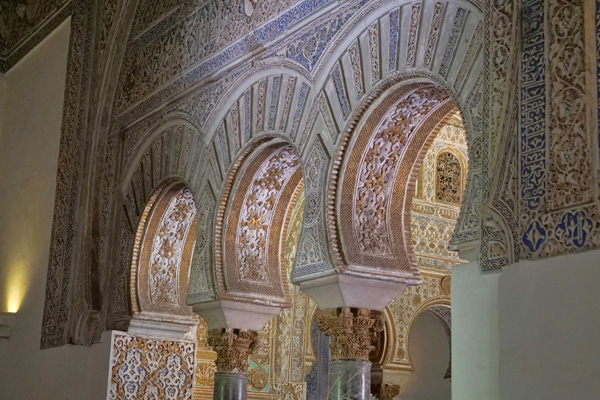
by successfulbob | architectural photography, Guest Post, Lumix G9, travel photography
Seville, Spain – Travel with Ken MacAdams Part Two
No visit to Seville is complete without a visit to the Royal Alcazar. Originally a 10th-century palace for the governors of the local Moorish state, this is Europe’s oldest still in use palace. Rebuilt in the 14th century by the Christian king Pedro I (by Muslim workmen), it features spectacularly decorated halls, courtyards, and gardens.
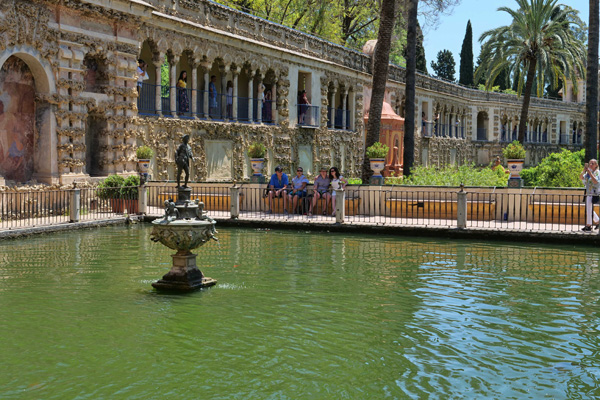
In the Garden Pool was a small statue of Mercury. This pool was fed by a 16th-century aqueduct.
There are distinctive Islamic-style flourishes seen in the archways, walls, and ceilings. As you enter, you’ll pass a rough stone wall, remnants of an older Moorish fortress, circa A.D. 913.
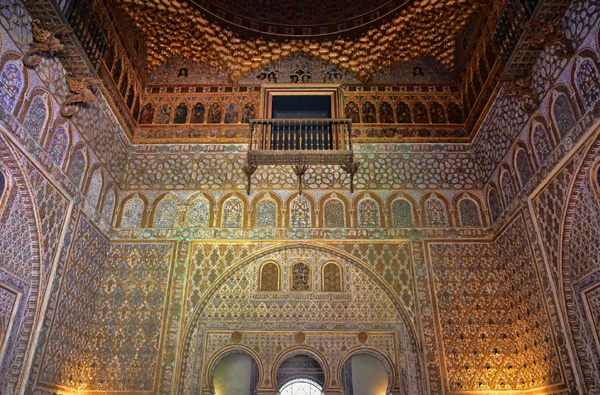
This image shows the painstaking attention to detail recorded on the walls and ceiling of the Hall of Ambassadors. All photos in this post © Ken MacAdams
In the Admiral’s Hall, Columbus recounted his travels, and Ferdinand Magellan planned his around-the-world venture. Queen Isabella realized Columbus’s New World discoveries could be big business. Here resides a model of Columbus’ flagship, the Santa Maria. In the center of King Pedro’s palace is the Courtyard of the Maidens, a big courtyard with a long pool in the center.

The Moorish doorways were left intact by the Reconquista Christians. Note the intricate detail in each arch.
Feeling his Alcazar a bit stark, the king hired Muslim workers from Granada – home to the famed Alhambra – to recreate its romance. This palace is considered by some as Spain’s best example of the Mudejar style. Subsequent kings, Philip II, and Charles V added their touches throughout the palace.
Seville, Spain part three Next Friday.
Ken has always loved to travel, so when he made a common connection with the fact that either a long day pounding the streets of some foreign city, or shooting the last dance at a wedding, a good part of his physical

weariness came from lugging around his big heavy DSLR. That’s when he started looking at alternatives – and ended up selecting Panasonic Lumix Micro Four Thirds gear.
Ken is rarely without a camera, and the next great photo travel experience – whether local or abroad – is always in the back of his mind! A longtime resident of the Four Corners, and when he’s not out on the road, he enjoys some of the great outdoor opportunities found there – mountain biking, hiking, and Jeeping.
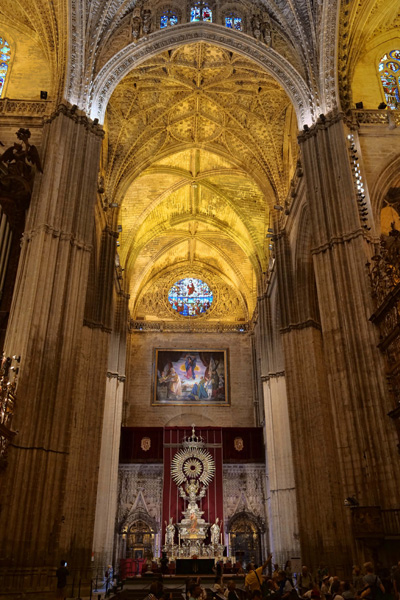
by successfulbob | architectural photography, Guest Post, Lumix G9, travel photography
Seville Spain – Travel with Ken MacAdams
Ken shares his travel photography and stories here on Successful-Photographer as he has in the past. Ken’s camera of choice is Panasonic’s flagship stills camera the Lumix G9 with the Leica DG Vario-ELMARIT Professional Lens, 12-60MM, F2.8-4.0
Seville shines as one of Spain’s magnificent stars. Activities include attending a bullfight, standing in awe at the immensity of the world’s largest Gothic church, or going shoulder to shoulder with the crowds in the Reales Alcazar, a beautiful Moorish style palace. In the 16th century, Seville was the gateway to the New World. Explorers Vespucci and Magellan sailed from its great river harbor, discovering new trade routes and abundant sources of gold, silver, cocoa, and tobacco. In the 17th century, it was Spain’s largest and wealthiest city.
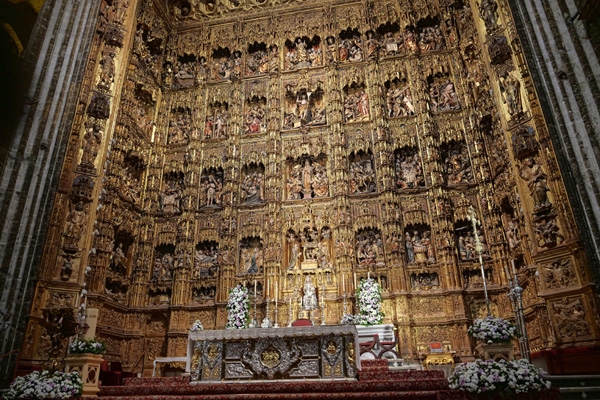 Protected by a Renaissance wrought-iron grill, it was impossible to stand on-center of the High Altar to photograph this 65 foot tall altar. All Photos in this post © Ken MacAdams
Protected by a Renaissance wrought-iron grill, it was impossible to stand on-center of the High Altar to photograph this 65 foot tall altar. All Photos in this post © Ken MacAdams
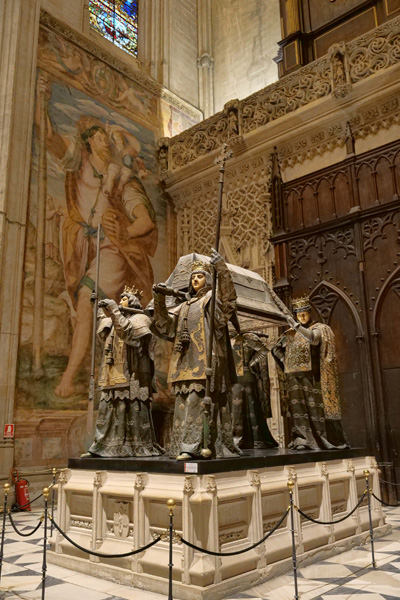 The tomb of Christopher Columbus is carried by four kings.
The tomb of Christopher Columbus is carried by four kings.
Seville’s Cathedral is the third largest church in Europe. It rises from the site of a mosque that was torn down in 1401 to make way for the cathedral, one that the Reconquista Christians said would be the largest in the world. Past the immense pipes of the church’s pipe organ is the High Altar, protected by a wrought-iron Renaissance grille. Standing 65 feet tall, there are 44 scenes from the life of Jesus and Mary, all carved from walnut and chestnut – blanketed by a staggering amount of gold leaf.
 In this image you can see the immense floor to ceiling scale of the church. Set on AWB, the Lumix G9 was able to correctly register the different color tones of the interior lighting.
In this image you can see the immense floor to ceiling scale of the church. Set on AWB, the Lumix G9 was able to correctly register the different color tones of the interior lighting.
The work, finished in 1564, took three generations to complete. Opposite from the Altar de Plata, is the Tomb of Columbus. Located in front of the cathedral’s entrance for pilgrims are four kings who bear the remains of Christopher Columbus upon their shoulders. Identified by their team shirts, the pallbearers represent the regions of Castile, Aragon, Leon, and Navarre. A walk through the Treasury reveals gold and silver reliquaries, and Spain’s most valuable crown, the jeweled Corona de la Virgen de los Reyes. Attached to the church is the Giralda Bell Tower, a former minaret. If you have the time – or energy – you can climb the 330 feet up to its top for a grand city view.
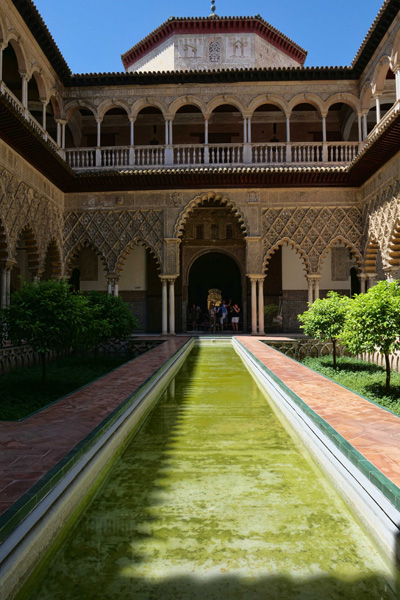 The pool within the courtyard served a dual purpose – besides beauty, it helped cool the surrounding rooms of the palace during the hot summer days.
The pool within the courtyard served a dual purpose – besides beauty, it helped cool the surrounding rooms of the palace during the hot summer days.
Look for more on Seveille, Spain and the Royal Alcazar from Ken next Friday!
Ken has always loved to travel, so when he made a common connection with the fact that either a long day pounding the streets of some foreign city, or shooting the last dance at a wedding, a good part of his physical

weariness came from lugging around his big heavy DSLR. That’s when he started looking at alternatives – and ended up selecting Panasonic Lumix Micro Four Thirds gear.
Ken is rarely without a camera, and the next great photo travel experience – whether local or abroad – is always in the back of his mind! A longtime resident of the Four Corners, and when he’s not out on the road, he enjoys some of the great outdoor opportunities found there – mountain biking, hiking, and Jeeping.
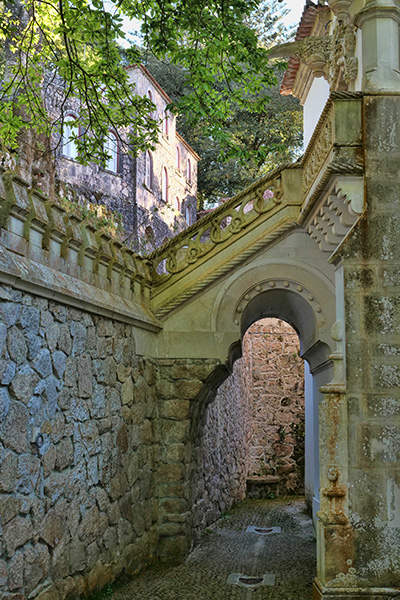
by successfulbob | cityscape photography, Guest Post, Lumix G9, travel photography
Sintra, Portugal – Guest Post Part Two
by Ken MacAdams
Ken shares his travel photography and stories here on Successful-Photographer as he has in the past. Ken’s camera of choice is Panasonic’s flagship stills camera the Lumix G9 with the Leica DG Vario-ELMARIT Professional Lens, 12-60MM, F2.8-4.0
Take it away Ken. Start with part one of this story here.
A five minute walk downhill brought me to my second stop, the Moorish Castle. The castle was constructed during the 8th and 9th centuries, during the period of Muslim Iberia. The castle was centrally located in an area that was primarily agricultural, and was necessary for protection of the residents. It was a strategic point during the Reconquista, but was taken by Christian forces after the fall of Lisbon in 1147. Settlers occupied the castle during the 12th and 13th centuries, but its military importance was progressively diminishing, and inhabitants were abandoning the castle for the old village of Sintra. In the beginning of the 15th century a small group of Jews occupied the castle until being expelled from the country by Manuel I of Portugal.
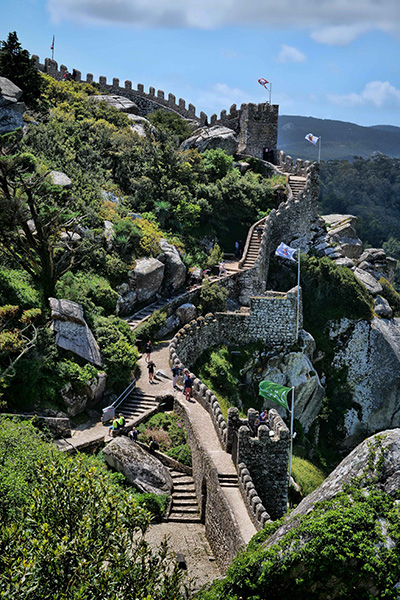
Inside the Moorish Castle. These walls match the terrains ups and downs with lots of archery vantage points. In ancient days, they would have cleared the trees around the outside of the compound so attackers had no shelter. Images in this post © Ken MacAdams
The 1755 Lisbon earthquake caused considerable damage to the chapel and castle. It wasn’t until King Ferdinand II began work on the Pena Palace around 1840, that he took up the task of improving the condition of the old Moorish Castle and walls. The castle is built on very rugged terrain with slopes reaching 40% gradients. The hike around the castle walls is bound to elevate your pulse! A stop at each watchtower allows you to catch your breath and enjoy the magnificent views.

Secluded archway leading to the palace. Examine the rope detail on the sides of the stairs.
Having navigated the castle walls, I retraced my steps – also uphill – to where I’d parked the car. Returning to back to Sintra, I visited the Quinta da Regaleria. This highly decorated, ornate Gothic styled, multi-story 20th century residence is situated in Old Town. The original house dates back to the 1800’s. Over the years, subsequent owners have made renovation, the most recent being about 1904, when carved gargoyles, Gothic turrets, exotic woodwork and other ornate features were added. Additions by an Italian architect evoked Roman, Gothic, Renaissance, and Manueline styles. Located within the park is the palace and chapel, and a luxurious park with walkways, lakes, grottoes, wells, benches, statues, and fountains.
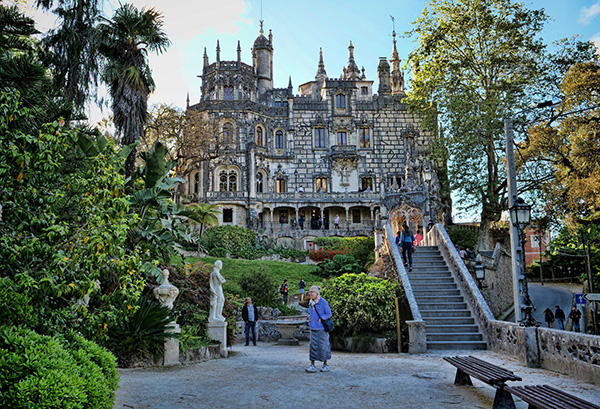
The Quinta da Regaleria palace and stature gardens.
The true wonder of the Quinta da Regaleria are the grounds, which were inspired by the owner’s mystic ideologies. Hidden within the grounds are references to the Knights Templar, the Masons, and dark alchemy. The well, one of the strangest features, has a concealed circular passageway that descends 88 ft. downward, then connects to a series of tunnels that run the length of the garden. The well symbolizes the initiation ceremony for the Knights Templar. As you walk through the gardens, you’re also awarded occasional glimpses of the Moorish Castle and Pena Palace high up on the mountain above you.
I’d packed all three sights into one day, so my feet were happy to settle into a comfy booth at one of downtown Sintra’s cafes! Shortly thereafter, I returned to the villa, and enjoyed a quiet nights’ sleep.
Ken has always loved to travel, so when he made a common connection with the fact that either a long day pounding the streets of some foreign city, or shooting the last dance at a wedding, a good part of his physical

weariness came from lugging around his big heavy DSLR. That’s when he started looking at alternatives – and ended up selecting Panasonic Lumix Micro Four Thirds gear.
Ken is rarely without a camera, and the next great photo travel experience – whether local or abroad – is always in the back of his mind! A longtime resident of the Four Corners, and when he’s not out on the road, he enjoys some of the great outdoor opportunities found there – mountain biking, hiking, and Jeeping.
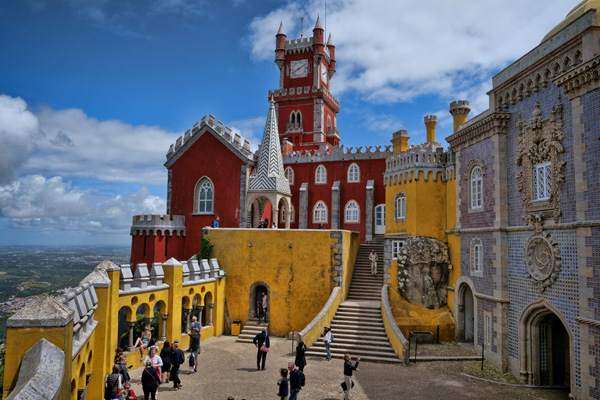
by successfulbob | architectural photography, cityscape photography, Guest Post, photography, travel photography
Sintra, Portugal – Guest Post
by Ken MacAdams
Ken is a traveling man and uses Lumix gear during his travels. Ken shares his travel photography and stories here on Successful-Photographer as he has in the past. Ken’s camera of choice is Panasonic’s flagship stills camera the Lumix G9 with the Leica DG Vario-ELMARIT Professional Lens, 12-60MM, F2.8-4.0
Take it away Ken
Situated 30 miles from Lisbon is a fairy-tale village named Sintra. Driving up from Lisbon on heavily forested, narrow and very twisty roads, I was shocked when the vibrantly colored Pena Place burst into view! I continued on to the quaint town of Sintra, where I’d reserved a villa, nestled in the cliffs, hundreds of feet below the palace. I was told the villa was once the king’s stables.
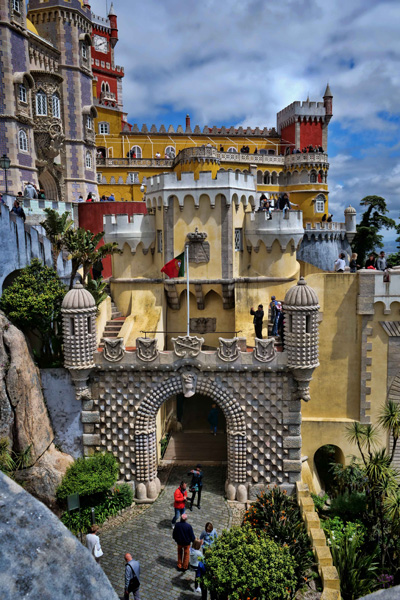 Entrance to the Pena Palace. Built around the craggy rocks of the mountaintop, the palace has a commanding view of the surrounding area. All Photos in this post © Ken MacAdams
Entrance to the Pena Palace. Built around the craggy rocks of the mountaintop, the palace has a commanding view of the surrounding area. All Photos in this post © Ken MacAdams
After a sumptious breakfast, I joined the parade of cars snaking up the mountainside to my first stop, the Palace of Pena. Situated atop a rocky peak, the palace has a commanding view of the surrounding valleys.

The rear of the palace, with views stretching all the way to the North Atlantic Ocean, on the horizon.
In 1838 King Ferdinand II acquired the former Hieronymite monastery of Our Lady of Pena. The original monastery buildings, consisting of the cloister and outbuildings, the chapel, the sacristy and the bell tower, were built in 1511. These buildings today form the northern section of the Palace of Pena, and are referred to as the Old Palace. King Ferdinand began making much needed repairs to the former monastery, and replaced the fourteen cells used by the monks with larger rooms with vaulted ceilings. About 1843 the King decided to enlarge the palace, and built a new wing with even larger rooms. This section is known as the New Palace.
In transforming the former monastery, the King was likely influenced and inspired by German romanticism found in the castles along the Rhine. When building on the New Palace was completed about 1865, the King began planting gardens surrounding the palace. With winding paths, stone benches, and pavilions at different points along its routes, the King copied the romantic gardens of that time. He also planted over 500 different species of trees, and plants originating from different points around the globe.
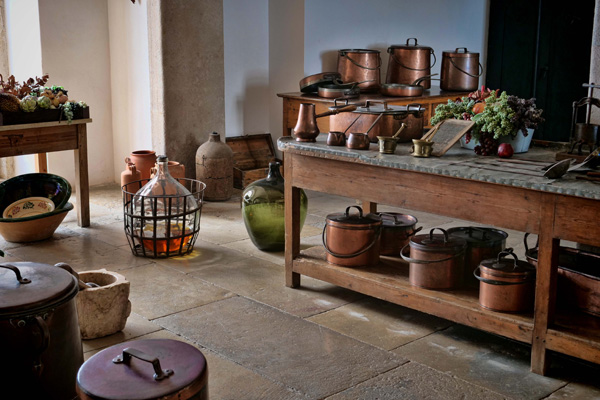
The one way tour circuit through the palace is self paced, generally ambling along at a relaxed speed. You see both the Old and New Palace wings, visit the living quarters of the King, their eating area, day rooms, the Great Room, and end up exiting through the kitchen. With original and period glassware, pottery, and furniture throughout the palace, you’ll have a chance to see how life was carried on by royalty of the 1800’s! The Palace of Pena was designated a National Monument in 1910, and classified a UNESCO World Heritage site in 1995.
Ken has always loved to travel, so when he made a common connection with the fact that either a long day pounding the streets of some foreign city, or shooting the last dance at a wedding, a good part of his physical

weariness came from lugging around his big heavy DSLR. That’s when he started looking at alternatives – and ended up selecting Panasonic Lumix Micro Four Thirds gear.
Ken is rarely without a camera, and the next great photo travel experience – whether local or abroad – is always in the back of his mind! A longtime resident of the Four Corners, and when he’s not out on the road, he enjoys some of the great outdoor opportunities found there – mountain biking, hiking, and Jeeping.
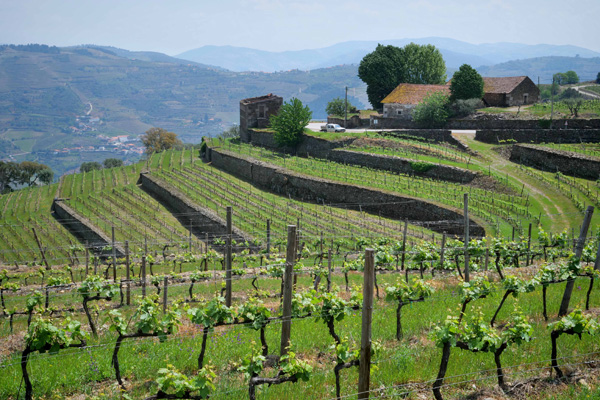
by successfulbob | Guest Post, Lumix G9, travel photography
Porto, Portugal – Guest Post Part Two
by Ken MacAdams
Ken is a traveling man and uses Lumix gear during his travels. Ken will share some of his travel photography and stories here on Successful-Photographer as he has in the past. Ken’s camera of choice is Panasonic’s flagship stills camera the Lumix G9 with the Leica DG Vario-ELMARIT Professional Lens, 12-60MM, F2.8-4.0
If you want to start at the beginning here’s part one.
Heeeeere’s Ken again!
We made a day trip out into the beautiful, hilly, wine region to the east of Porto. Vineyards cling to the sometimes steep hillsides bordering the meandering Douro River. Old World cities cling to these hillsides also, as the narrow road snakes its way inland. We stopped at one of the vineyards along the way for a tour and wine tasting experience. A narrow road switch-backed us from the river side to the establishment set high up on the hillside. Views up and down the river valley revealed terraced vines as far as the eye could see. Inside, the guide explained the different types of port wines – white, red, tawny, and rose. For the different varieties of grapes there is a different aging processes for the wines, with some aged in wooden casks, others in bottles. We were led deep underground, into their wine cellar, and allowed to walk between rows of neatly stacked wooden casks. Another area housed thousands of bottles of port wine, all quietly aging away! Climbing back up from the cellar, we entered a tasting room, where several different varieties were uncorked for our sampling.

Rural vineyards as far as the eye can see
All Images in this post © Ken MacAdams
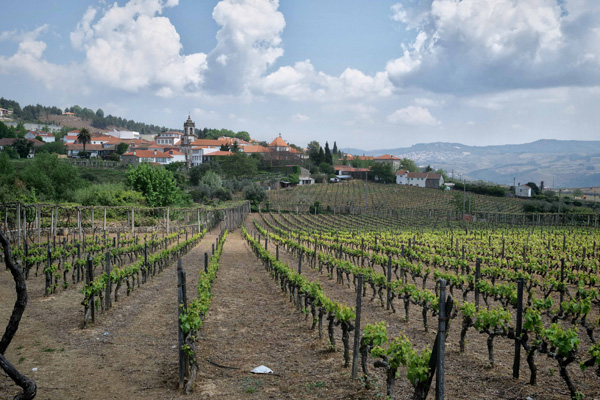 Douro Valley vineyards with the town of Sabrosa in the background
Douro Valley vineyards with the town of Sabrosa in the background
Back in the 1700’s, the wines processed inland by the different vintners was transported downriver to Porto in large casks on Rabelo boats, small river-going boats. The casks were stored in warehouses along the river in Porto, called “lodges”. The port wine often aged here for years before being loaded onto ocean going ships which transported them primarily to England, or to final markets in Europe. Modern dams on the river make this shipping process impossible today. Many of the original “lodges” in Porto along the river have been converted into wine tasting establishments. You can still see replicas of the historic boats, complete with wine casks, in many of the old riverside cities that dot the banks of the Douro River, as well as in the Ribeira district in Porto.
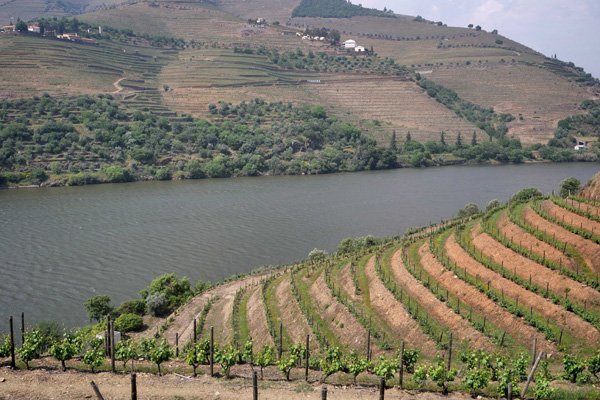
The River Douro with vineyards clinging to the hillsides
It was late in the night when we returned to Porto, but our travel experiences up through the Douro Valley were priceless. We’d seen history, tasted the famous Port wines, and walked among the vineyards. We could have easily stayed in a villa back in the valley, but other destinations in Portugal beckoned.
Ken MacAdams – “I grew up with a darkroom in my basement…so all the old film skills were my friend when  digital came on the scene. Funny thing happened…photography just got more interesting as digital posed new challenges! While I loved the characteristic sounds and smells of the old wet-process darkroom days, I wouldn’t go back!”
digital came on the scene. Funny thing happened…photography just got more interesting as digital posed new challenges! While I loved the characteristic sounds and smells of the old wet-process darkroom days, I wouldn’t go back!”
Ken has always loved to travel, so when he made a common connection with the fact that either a long day pounding the streets of some foreign city, or shooting the last dance at a wedding, a good part of his physical weariness came from lugging around my big heavy DSLR. That’s when he started looking at alternatives – and ended up selecting Panasonic Lumix Micro Four Thirds gear.
Ken is rarely without a camera, and the next great photo travel experience – whether local or abroad – is always in the back of his mind! A longtime resident of the Four Corners, and when he’s not out on the road, he enjoys some of the great outdoor opportunities found there – mountain biking, hiking, and Jeeping.
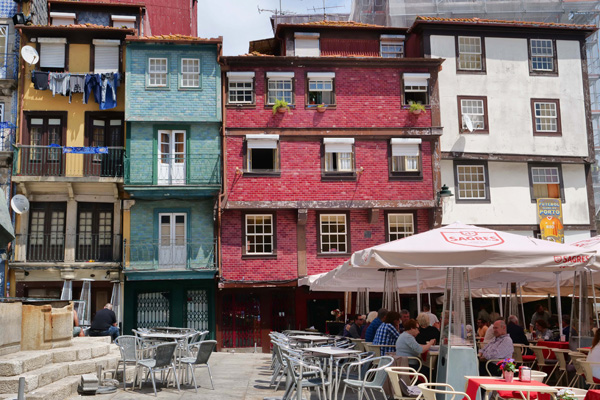
by successfulbob | cityscape photography, Guest Post, Lumix G9, travel photography
Porto, Portugal – Guest Post
by Ken MacAdams
Ken is a traveling man and uses Lumix gear during his travels. Ken will share some of his travel photography and stories here on Successful-Photographer as he has in the past. Ken’s camera of choice is Panasonic’s flagship stills camera the Lumix G9 with the Leica DG Vario-ELMARIT Professional Lens, 12-60MM, F2.8-4.0
Heeeeere’s Ken!
Porto is a coastal city in northwest Portugal known for its port wine and stately bridges. In the medieval riverside Ribeira district, narrow, hilly cobbled streets wind past merchants’ cafes and houses. Close by is the Dom Luis I Bridge, a double deck metal arch bridge that was designed by Gustav Eiffel, the same man who designed Paris’ famous Eiffel Tower. Spanning the River Douro between the cities of Porto and Vila Nova de Gaia, this unique bridge offers great views of the river and city. You can walk across either level of the bridge, but most of the activity takes place on the streets adjoining the lower level, or riverside.
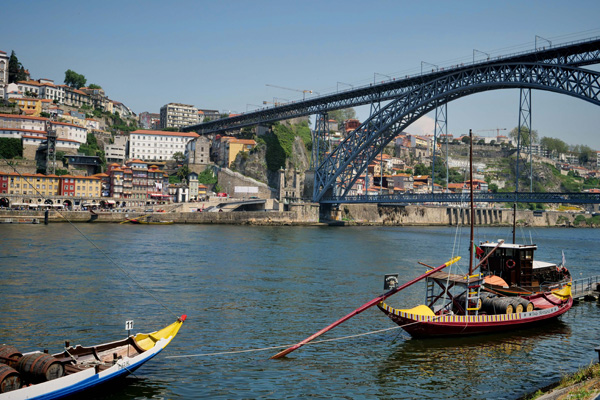 Dom Luis I Bridge. The bridge was designed by Gustav Eiffel. Rabelo boats in the foreground.
Dom Luis I Bridge. The bridge was designed by Gustav Eiffel. Rabelo boats in the foreground.
All Photos in this post © 2019 Ken MacAdams
While on the Vila Nova de Gaia city side, or south side of the river, we turned down Avenida Diogo Leite, a street paralleling the River Douro. This street is lined with a multitude of sidewalk cafes, and numerous wine tasting establishments. Settling in at one of the sidewalk cafes, we enjoyed the views of watercraft plying the River Douro, with the hillside city of Porto in the background.

Cafes and housing in the old Riberia district, Porto.
While history tells us it was the Romans – early conquerors of this land – that introduced the first grapevines to this area, it was the Brits who championed port. The significance of the wine producing Douro area dates back hundreds of years. When England was at war with France in the early 1700’s, English merchants began importing wine from this region, for the deprived English wine drinkers of French wines. British importers realized the need for a smooth fortified wine that would not only appeal to English palates but would also survive the trip to London.
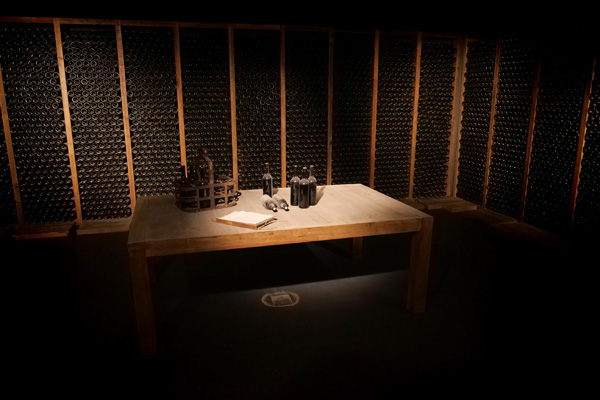
Wine Cellar
Port wine is typically richer, sweeter, and higher in alcohol content than unfortified wines. This is caused by the addition of distilled grape spirits to fortify the wine and halt fermentation before all the sugar is converted to alcohol, and results in a wine that is usually 19% to 20% alcohol. The grapes aren’t grown in Porto itself, but in the region extending inland up the Douro River Valley.
To be continued next Friday. Porto, Portugal – Part Two
 Ken MacAdams – “I grew up with a darkroom in my basement…so all the old film skills were my friend when digital came on the scene. Funny thing happened…photography just got more interesting as digital posed new challenges! While I loved the characteristic sounds and smells of the old wet-process darkroom days, I wouldn’t go back!”
Ken MacAdams – “I grew up with a darkroom in my basement…so all the old film skills were my friend when digital came on the scene. Funny thing happened…photography just got more interesting as digital posed new challenges! While I loved the characteristic sounds and smells of the old wet-process darkroom days, I wouldn’t go back!”
Ken has always loved to travel, so when he made a common connection with the fact that either a long day pounding the streets of some foreign city, or shooting the last dance at a wedding, a good part of his physical weariness came from lugging around my big heavy DSLR. That’s when he started looking at alternatives – and ended up selecting Panasonic Lumix Micro Four Thirds gear.
Ken is rarely without a camera, and the next great photo travel experience – whether local or abroad – is always in the back of his mind! A longtime resident of the Four Corners, and when he’s not out on the road, he enjoys some of the great outdoor opportunities found here – mountain biking, hiking, and Jeeping.

 This image shows the painstaking attention to detail recorded on the walls and ceiling of the Hall of Ambassadors. All photos in this post © Ken MacAdams
This image shows the painstaking attention to detail recorded on the walls and ceiling of the Hall of Ambassadors. All photos in this post © Ken MacAdams The Moorish doorways were left intact by the Reconquista Christians. Note the intricate detail in each arch.
The Moorish doorways were left intact by the Reconquista Christians. Note the intricate detail in each arch. weariness came from lugging around his big heavy DSLR. That’s when he started looking at alternatives – and ended up selecting Panasonic Lumix Micro Four Thirds gear.
weariness came from lugging around his big heavy DSLR. That’s when he started looking at alternatives – and ended up selecting Panasonic Lumix Micro Four Thirds gear.






















